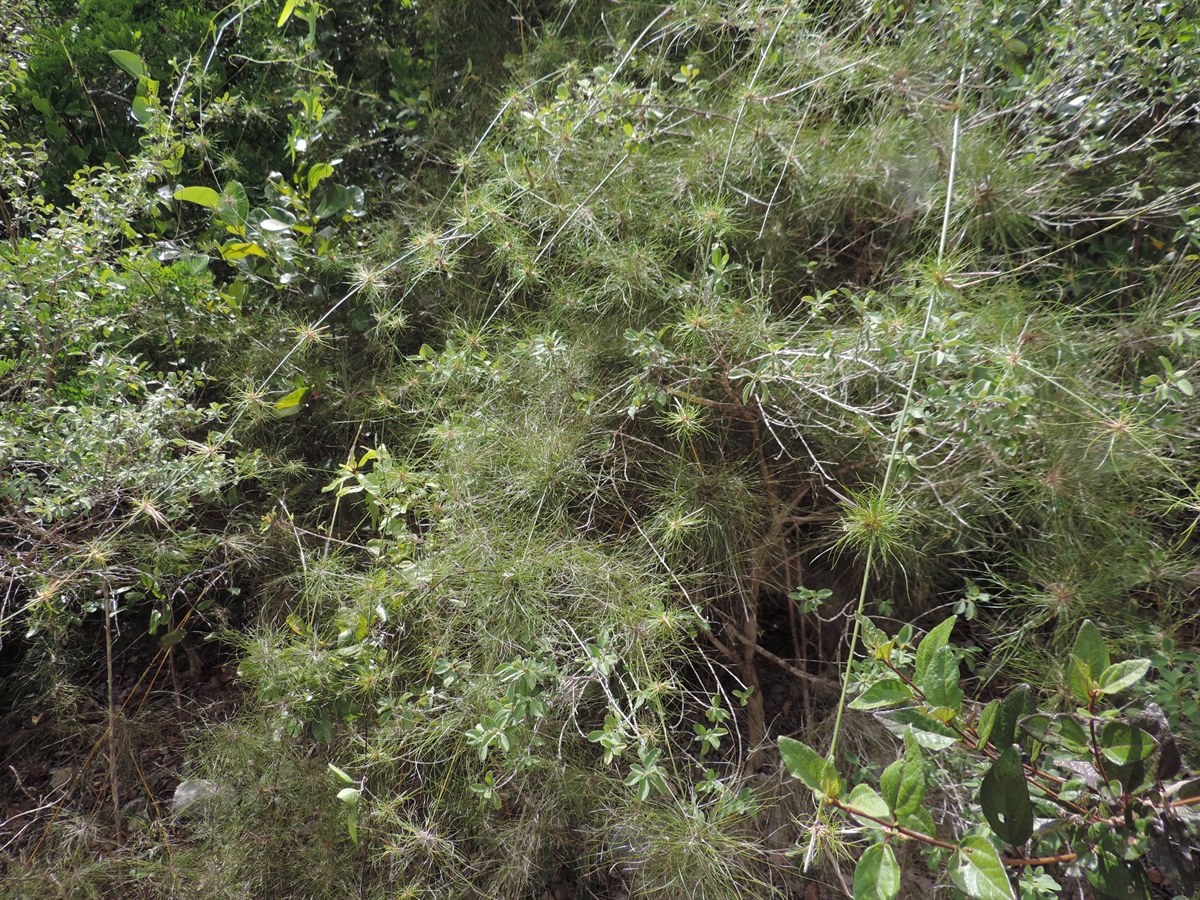Habit: Tibisia farcta grows vine like through vegetation to 15 m in length. The leaves are arranged alternately to 15 cm in length (usually shorter) with a basal sheath extending along the stem. At the point of divergence of the leaf sheath to the leaf blade is a small ligule. The leaves are parallel veined.
Numerous short branches are clustered at points along the stems with each branch ending in an inflorescence.
The zygomorphic flowers are arranged in a terminal spikelet. At the base of the spikelet are 2 yellow brown, ciliate structures called glumes. In each spikelet there are flowering structures each is subtended by 2 additional structures (lemma and palea). The lower flower is sterile and the upper fertile and has 1 stamen and a superior ovary each with a single locule and seed. The fruit is a caryopsis.
Habitat: Tibisia farcta grows in Pine Woodlands and Dry Broadleaf Evergreen Formation – Shrublands (scrubland coppice).
Distribution: Tibisia farcta occurs on central and northern island groupings within the Lucayan Archipelago as well as the Greater Antilles (excluding Jamaica), the Leeward Islands and French Guiana.
Medicinal/Cultural/Economic usage: Tibisia farcta is not known to be used medicinally in the Bahamas.


